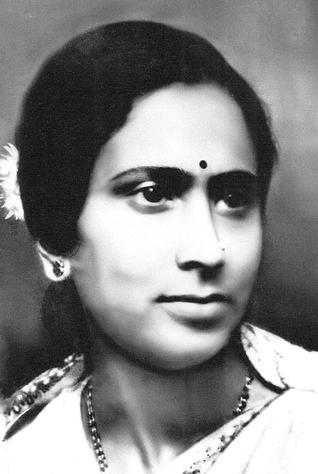
Kodagina Gowramma was a significant writer with a modern and progressive vision. As we remember this writer on her 100th birth anniversary, it is with pride that we recall her efforts to forge a meaningful artistic destiny for herself
It is hard to believe that one hundred years have passed since the birth of Kodagina Gowramma, that is Ms. B.T.G. Krishna (1912-1939). The remarkable woman, who was all of 27, when she passed away, grappled with the issues of modernity that are relevant even today. She could empathise with the angst of the individual, while probing deeply into the socio-political aetiology of the same. She represents the positive effects of the much denigrated western education system. The fact that she lived in Coorg which was relatively free from the shackles of Indian orthodoxy must have abetted her intellectual development and social attitudes. Her ideology was truly feminist, at a time when feminism was in its infancy even in the West.
Gowramma, has two collections of short stories to her credit, “Kambani” (Tears) and “Chiguru” (Blossoms), both of which were published posthumously. The response of her contemporary writers and literary critics was appropriately laden with emotion and appreciation, even though she did not get the critical and analytical tributes that were rightfully due to her. This fact is exemplified in the elegiac poem composed by Bendre, one of the foremost poets of Kannada. A pen portrait by Da. Baa. Kulkarni, who had fraternal feelings for Gowramma, was more about her persona than her work. Gowramma refers to such writings as “hollow compassion”. Gowramma was truly a product of the turbulent times that she lived in. She studied in a convent, played tennis and indulged in swimming even after her wedding, learnt Hindi in a remote town, corresponded with the important writers of her times, women as well as men, and she was deeply influenced by the independence movement. She went to the extent of inviting Mahatma Gandhi to her place and donated all her ornaments. Actually, she was much more emancipated than most of the characters that inhabit her stories. This, however, did not transform her into a firebrand revolutionary, out of tune with the ground realities of her times.
Her oeuvre is more concerned with the unsaid and unattainable, rather than idealistic portrayals. Hers was a nascent universe that contained the seeds of change, which later sprouted in the novels of Triveni, decades later. Most of her stories deal with the problems faced by young women on the verge of marriage or in the immediate aftermath of that event which is often cataclysmic for many of them. Any act of rebellion or protest results in tragic consequences.
However, the author succeeds in puncturing the male ego and creating a sense of guilt. Her stories transgress the boundaries of caste and religion and cast aspersions on the fundamentalist agenda as early as the first few decades of the previous century. The story “Aparaadhi Yaaru” (Who is the criminal) which delineates the angst of a young woman ostracised by the orthodox Hindu society and saved by a Muslim girl and her family, concludes with a newspaper report: “The fact that a Hindu woman has embraced Islam, has caused lots of anguish to the Hindus of the town. A meeting of the prominent Hindus of the town, presided over by Mr. Nagesha Rao, has resolved to take care, that such an event does not recur .” The ultimate irony is that it was this Nagesha Rao, who seduced Parvathi the protagonist of the story and drove her to the brink of suicide before she was saved.
Stories such as “Vaaniya Samasye”, “Aahuthi”, “Manuvina Raani” et al, focus on similar problems and try to offer solutions that are modern and progressive. The author is aware of the fact that some of them may be impractical for her own times, and does not shy away from portraying the aredevilry of her characters.
Gowramma displays excellent control over the modes of narration. She adopts many techniques such as narrating a story through letters, non-linear structuring of events, a balanced outlook which does not indulge in brash criticism of men and a keen interest in facets of life other than the plight of women. Her style is neither verbose nor unduly sentimental. She does not indulge in overt philosophising even though her stories are illuminated by a progressive social vision. Kannada writer Vaidehi, takes cognition of Gowramma’s balanced worldview and the multiple ways in which her artistic vision combines with emotional and the intellectual, in a perceptive preface that she has written for the volume of Gowramma’s stories in Mareyalagada Kathegalu series..
These stories are more enduring than the fiction of some of her senior, male contemporaries. Her world is peopled by young adolescent girls who are enraptured in their dreams as manifest in their innocent prattle which is often shattered by harsh realities. Gowramma is relevant by the intrinsic merits of her stories rather than their historical significance. Of course, the latter is undisputed. A competent translation of these stories into English and other Indian languages would be a fitting tribute to this great writer who transcended the constraints of her context and forged a meaningful artistic destiny for herself.
source: http://www.thehindu.com / The Hindu / Home> Books / by H.S.Raghavendra Rao / March 01st, 2012

